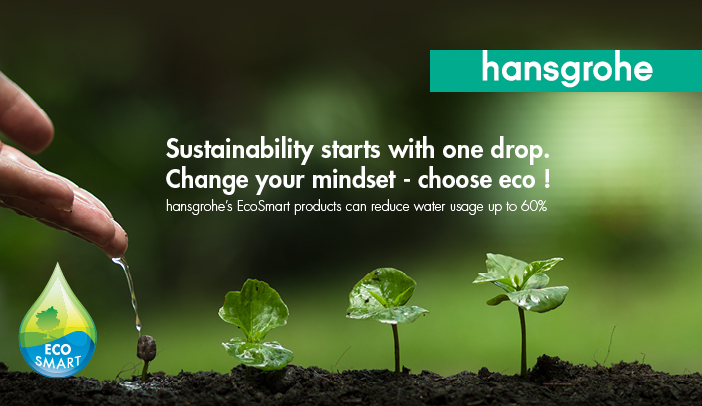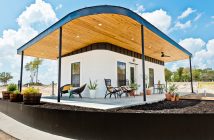- Once restricted to luxury or super-tech buildings, home automation is proving to be an increasingly fundamental and affordable addition to architectural projects, whether to new buildings or renovations.
- While understanding how they operate can be extremely complex, the primary purpose of technology is to make life simpler, safer, and easier.
By definition, home automation seeks to be globally intelligent, functioning as a system that facilitates processes without unnecessarily complicating the user’s life. The idea is to connect devices, which in turn connect and talk through a centralized control unit, accessible by computers, tablets, and mobile phones. These include lights, appliances, electrical outlets, and heating and cooling systems, but also alarms, doors, windows, smoke detectors, surveillance cameras, and many other sensors and devices.
For example, home automation users can turn the lights on or off at specific times each day, adjust the heater or air conditioner to turn on a few minutes before they arrive home, or turn on all the lights in their home when the security system alarm is triggered. In addition to these immediate effects, monitoring applications can also provide accurate home information by generating detailed reports on equipment that could be working better or spending less.
As systems such as Google Home, Alexa, and Amazon Echo become more and more common and artificial intelligence becomes more and more sophisticated, the integration of diverse applications in residential spaces should increasingly enter our daily lives through the Internet of Things (commonly referred to as IoT). That is, in addition to smartphones and personal computers, appliances and sensors are able to identify patterns, process information, and perform tasks both through commands and automatically. From a clock or a refrigerator to cars, machines, and urban infrastructure, many of the mechanical products we interact with can communicate and automate processes. Although it sounds like a science fiction script, these are technologies that are not so far from us. Listed below are some relevant questions on the topic:
Increased security
This is one of the main reasons why people opt for home automation systems. Information gathered from connected devices and motion sensors allows the system to understand when users are indoors and out, to lock doors and gates, and to leave some devices on standby. But artificial intelligence can also be used to automate threat detection and perhaps more proactively alert us if something looks wrong, such as heat sensors and video cameras setting off alarms and calling firefighters in the event of a short circuit. Through facial recognition algorithms on social media, the system itself can tell if someone outside your circle of acquaintances is trying to access your space and send a message to your mobile phone asking whether you want the doors to stay locked or not. This type of technology can improve the efficiency of security systems and reduce false alarms.
Improve the lives of people with reduced mobility
Automation can be useful for people with disabilities and for the elderly. People with Parkinson’s disease or other motor diseases can trigger switches without touching them, and motion sensors can trigger safety lights automatically. Motion sensors can also signal a toilet crash and trigger rescue services. Even blood pressure sensors and blood sugar levels can be incorporated into these systems, providing peace of mind to close relatives.
Resource Saving
Although the system installation may be a high initial investment, it can be cost-saving in the long run because of the savings it can provide. Technologies such as thermostats and smart lighting connect to centralized control that can act on its own or be programmed to control energy consumption and reduce waste. Just as lighting and home security can be controlled by a single device, even the water bill can be impacted. For example, intelligent irrigation systems work similarly to stop flow and save money, some even reacting to weather conditions to apply exactly the correct amount of water to the soil.
Make everyday life and buildings smarter
The ability to automate repetitive housekeeping can free time for more important things. For example, an internet-connected refrigerator can check for missing items and make purchases online. With smart devices, many home appliances can be remotely programmed and will work automatically or by touch. You would be able to trigger almost everything by smartphone.
It is important to mention that these systems must be highly protected, as a single attempt to break into this centralized system can lead to the invasion of privacy and the loss of valuable confidential information. Still, most people who have experienced life in an automated space will likely be uncomfortable returning to traditional systems. It is critical to experience the benefits of home automation in order to understand its potential and to know which elements will best improve your daily life.
Author: Eduardo Souza
This article was first published in Arch Daily and is republished with permission.
Clean drinking water is becoming increasingly scarce. Do your bit to save water. You can start by retrofitting your tap and shower mixers at home with Hansgrohe EcoSmart technology.
Visit the Hansgrohe Showroom in Johannesburg to see the Rainfinity range in action.
Find a Hansgrohe Retail Store near you . Hansgrohe is present in South Africa, Madagascar, Nigeria, Kenya, Botswana, Seychelles, Mauritius, Namibia, Tanzania, Zimbabwe, Ghana and Zambia.
















